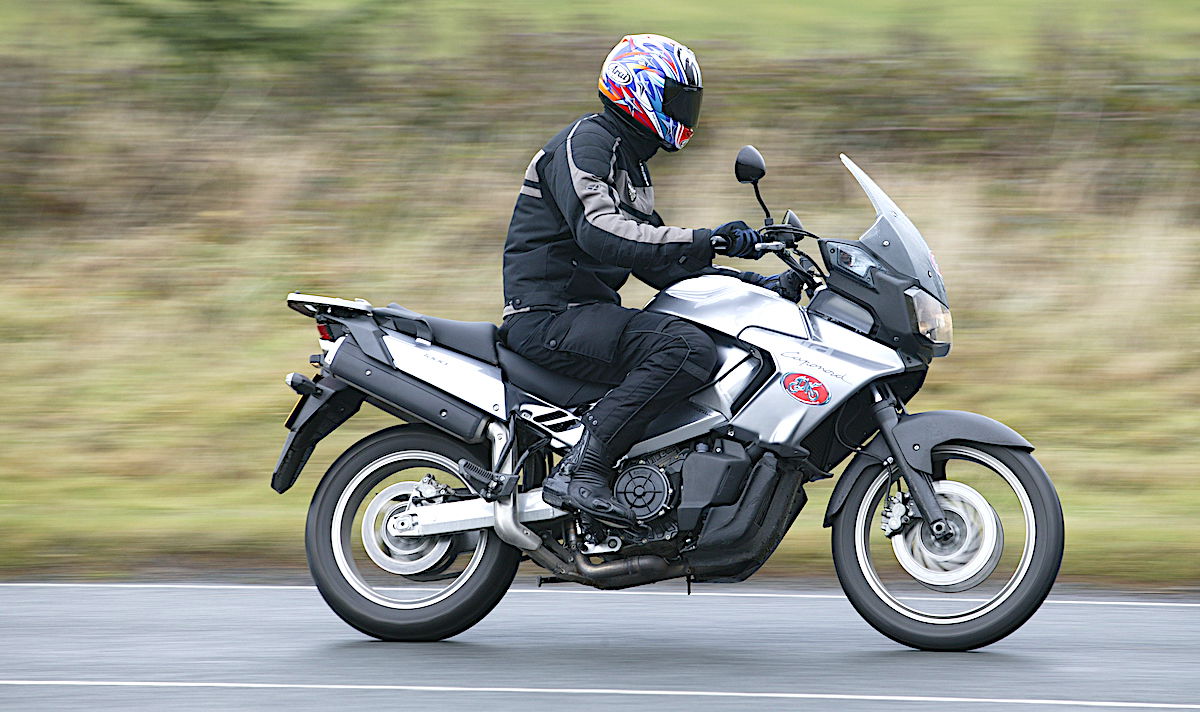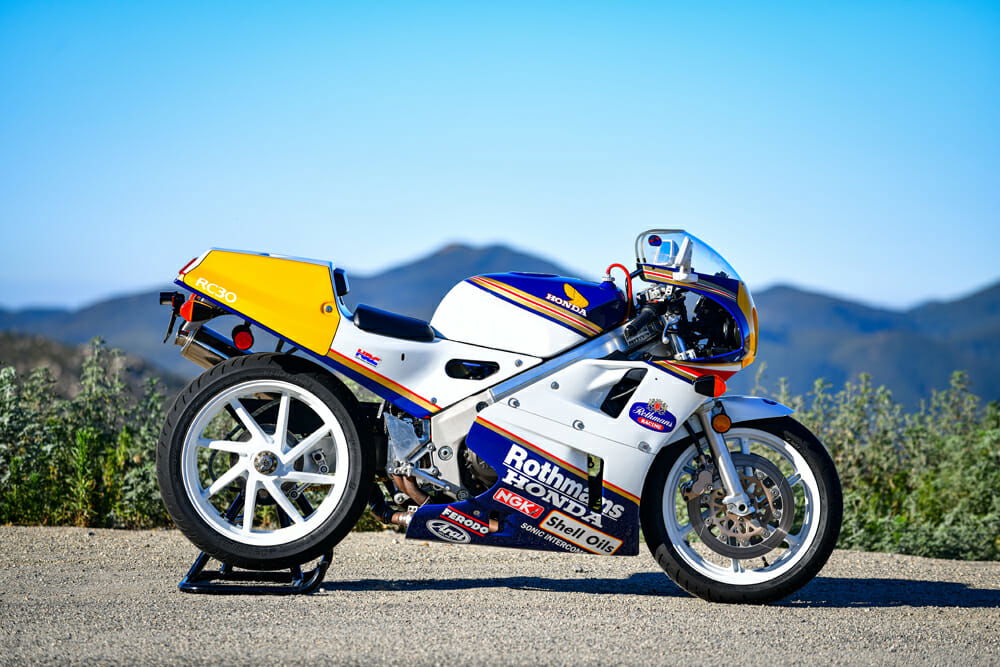Top 10 pioneering motorcycles that were way before their time
We may all love a retro motorcycle but which pioneering, forward-thinking motorcycles peered into the future and proved to be way ahead of their time?

A New Year brings a raft of new motorcycles – and for 2021, largely thanks to the onset of Euro5, there’s more than ever.
Some will be great, others less so. Some will be amazingly advanced, either technologically or styling-wise, some will also be successful while others will fail to catch on. And if we could predict which those would be with absolute accuracy we’d be looking forward to a luxury life in Monaco rather than shopping at Lidl!
Looking backwards, however, is a different story. It’s not hard to identify historic motorcycle failures or flops – we’ve done it before. Yamaha’s radical, hub-centre-steered GTS1000 of 1993 being the classic example.
But what about ‘bikes that were before their time’? Great, advanced machines which failed (or at least were under-appreciated) not because of any intrinsically-flawed concept but simply because the market wasn’t ready for them? Brilliant retro bikes, for example, before retro bikes had even become popular. Or all-new types of machine that history has proved were ahead of their time?
It’s subjective and academic, of course, but it does make you wonder what might have been, so here’s our ‘Top 10 bikes which were before their time’, in chronological order…
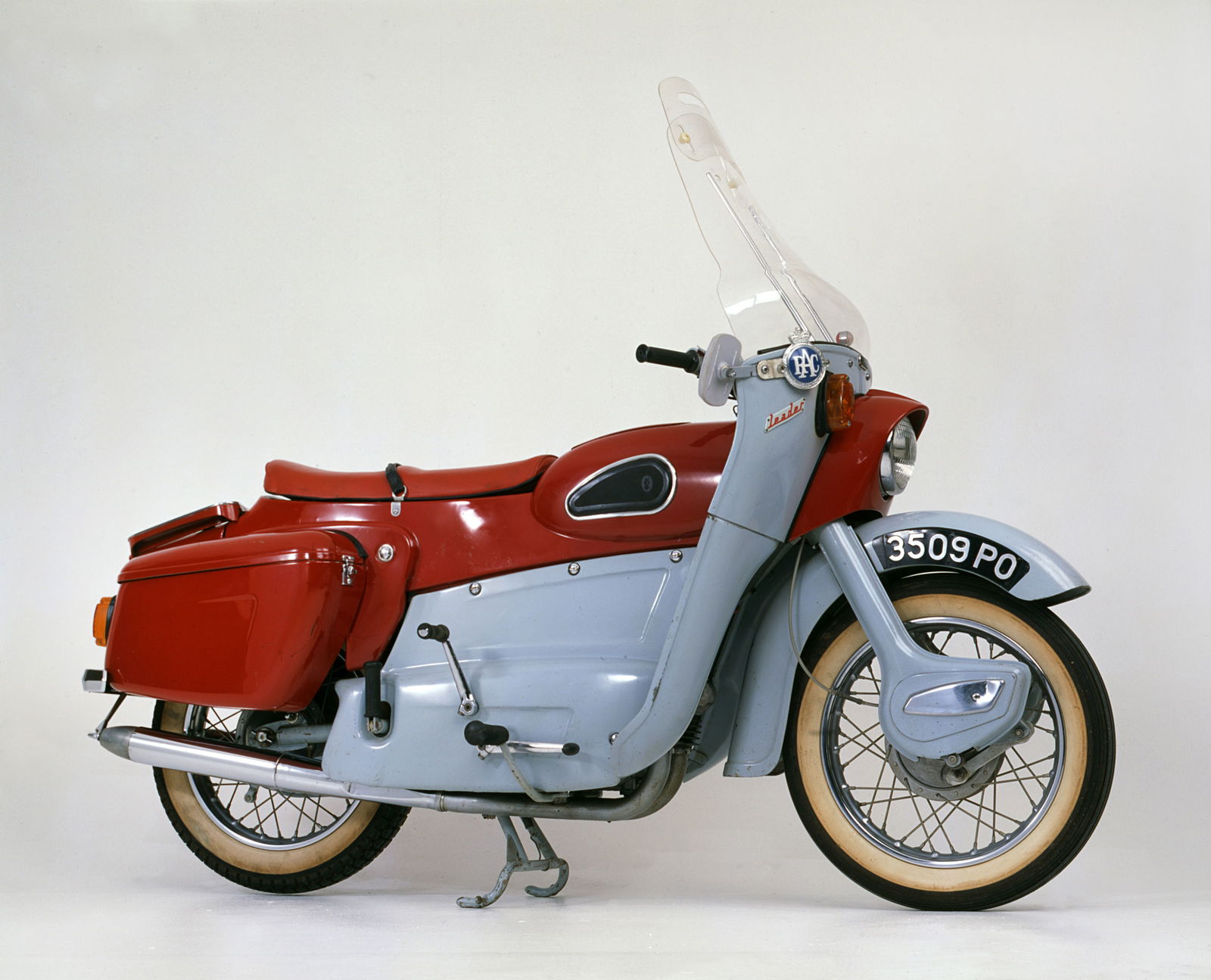
Ariel Leader [1958-1965]
The consensus of popular opinion has us believe that most British motorcycles between the late 1950s and late ‘60s were unimaginative, overly-conservative, unreliable and quickly being overtaken by offerings from the Far East in terms of technology and performance. Not so. Take the Ariel Leader unveiled in 1958.
The last great bike from innovative British firm Ariel and the last design from pioneering engineer Val Page, the Leader may have been ‘merely’ a 250 commuter, but it made up for what it lacked in performance and pzazz with clever thinking and an innovative approach. The leader was fully-enclosed with an integral windscreen decades before fairings became standard.
It was the first British bike with indicators. It had a pressed steel monocoque frame that incorporated the tank – the ‘dummy’ tank was a storage space that could accommodate a helmet (are you listening Honda NC750X?). It had optional luggage and was widely adopted by the police.
Claimed to have the comfort of a scooter but the performance of a motorcycle, the Leader was, in many ways, years before its time and was voted ‘Machine of the Year’ in 1959. Unfortunately, it failed to compete with the new, cheaper Japanese commuters and Ariel closed in 1965.

Yamaha XZ550 [1982-1983]
Those old enough to remember motorcycling the early ‘80s will also remember the intense competition between the two leading Japanese marques, Honda and Yamaha, both with their street bikes and in racing, as the duo sparred for global No. 1 status.
It’s why Honda returned to GP racing with its ill-fated NR500 and the like, after all. A by-product of that competition was a seemingly endless stream of ever-more highly advanced street bikes, each bristling with hi-tech, some of it good, others, particularly when rushed into production, less so. Remember Honda’s first ‘chocolate cam’ V4 VF750s?
Yamaha had more than a few follies of their own, with the oddball TR1 V-twin roadster standing out. Another was the short-lived XZ550. While most bikes in 1982 were still air-cooled and twin shock, the XZ was a liquid-cooled, DOHC, high-revving, oversquare, four-valve V-twin in a sharp monoshock chassis with shaft drive and equally sharp styling – a bit like Honda’s brilliant 650 Bros of a few years later.
Trouble was, rushed to market its fuelling wasn’t sorted, its steering was ‘twitchy’ (partly due to the ‘trailing axle’ forks adopted to keep the wheelbase short), there were electrical gremlins and the whole bike quickly gained a reputation as a lemon when, in truth, with a bit of refinement, it was years ahead of the competition.
Yamaha attempted a rescue by adding a fairing and re-pitching it as a tourer but it was too late. Shame, this advanced, liquid-cooled, middleweight V-twin had the potential to be the SV650 of its day – 18 years ahead of the Suzuki.
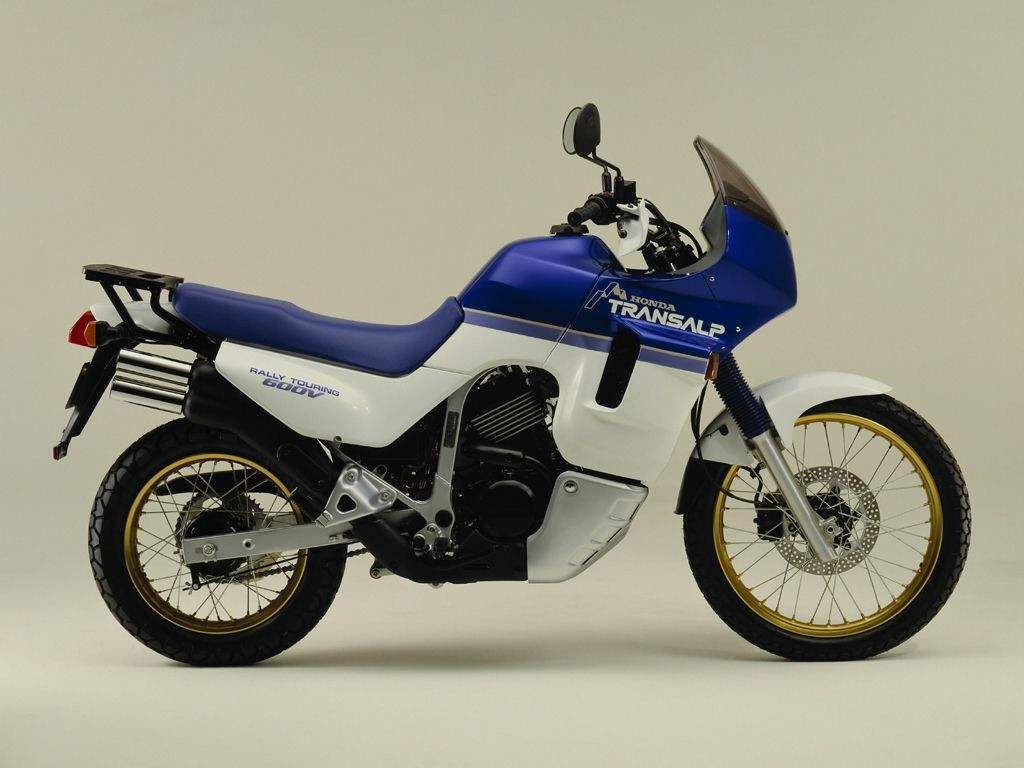
Honda XL600V Transalp [1987-2013]
It’s easy to forget that in these days when ‘adventure tourers such as BMW’s GS continue to dominate the sales charts while smaller, 700cc versions such as Yamaha’s latest Tenere are considered new ideas, that the original, modern, middleweight adventure tourer actually came out over 30 years ago.
We’re talking, of course, about Honda’s original 600cc V-twin Transalp. BMW’s 1980 R80G/S may be rightly revered today as the granddaddy of the modern adventure bike. In truth, however, it wasn’t genuinely considered a long distance tourer until the 1990 version gained a frame-mounted fairing. And it didn’t really take off until the 2001 R1150GS Adventure, as popularised by Ewan and Charley’s ‘Long Way Round’.
Meantimes, less famously, Honda brought out its truly radical first Transalp way back in 1987 – before even the first Africa Twin. Although memory misrepresents the Transalp as slightly dull, sensible and soft that is a disservice.
Instead it was years ahead of its time – the first middleweight ‘rally tourer’, powered, unusually, by a bespoke V-twin, with just as much touring comfort as off-road ability (thanks to its frame-mounted fairing and large tank) and easy as pie to ride.
In fairness, it also wasn’t a failure, proving a big hit in France and Italy. But the Transalp, although morphing through 650 and 700 versions and surviving for a full 26 years, it also never got the reverence, recognition and massive sales it probably deserved. Those went to the VStrom 650, Versys and Tiger 800 instead…
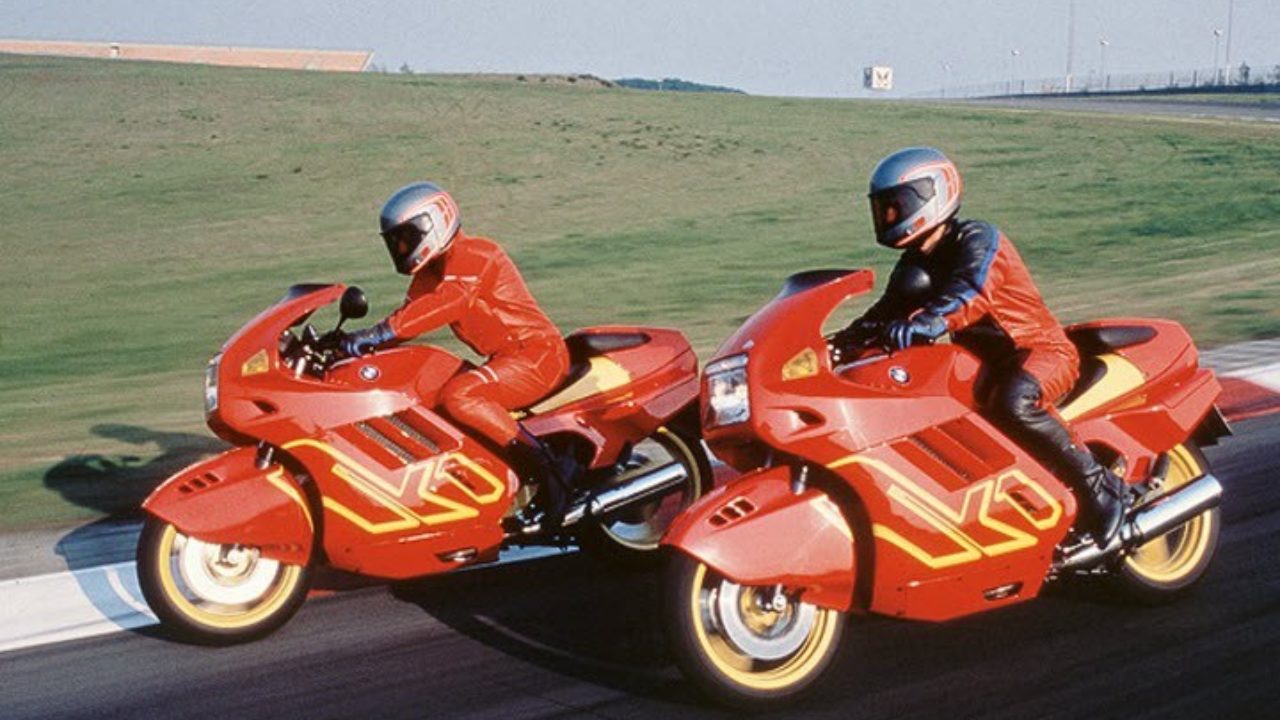
BMW K1 [1988-1992]
Few bikes in history have been as advanced as the 1988 K1. BMW’s then flagship was not only the first 16-valve K-series machine (which, admittedly, in itself was nothing new, most Japanese superbikes by then featuring liquid-cooled, four-cylinder, 16-valve motors), it also boasted fuel-injection, shaft drive, pioneering ABS brakes and ultra-aerodynamic bodywork, all the sorts of things, in fact, which only became standard issue on Japanese hyperbikes such as the Hayabusa and ZZR1400 in the mid-Noughties.
Trouble was, the K1 also ‘only’ produced 100bhp, according to BMW’s policy of the day, when cheaper rivals such as Honda’s CBR1000F had 30bhp more. That 100bhp was not only the K1’s biggest failing it was why BMW had given it that radical, aerodynamic bodywork in the first place – in a bid to boost performance without raising power.
Those radical looks, however, proved another turn-off for buyers and the K1 was quickly dropped with fewer than 1000 brought to the UK. But imagine how much different that might have been if the K1 produced, say, the power of today’s S1000RR…

Moto Guzzi 1000S [1989-1993]
Most people these days think historic Italian brand Moto Guzzi’s only true ‘retro’ is its popular middleweight V7, as first introduced in 2009 and updated again into 850c form for 2021.
Many also bemoan the fact that, although the V7 is good (like a kind of Italian Triumph Bonneville) it’d be better still if it was joined by a bigger brother, based, say, on Guzzi’s ‘big block’ 1100cc version of its traditional, transversely-mounted, shaft-drive V-twin.
After all, the V11, produced during Guzzi’s Aprilia-owned period between 2000 and 2004, was a pretty good effort, if not ‘retro’ enough for some. So, imagine a true retro-roadster Guzzi but with modern updates? Thing is, Guzzi actually did it – years ago, way before ‘retro’ became a ‘thing’.
The 1000S was launched in 1989 and was basically the then 1000cc Le Mans Mk V sportster but with authentic retro styling and bodywork inspired by the 1974 750S. The result, with 81bhp, more modern electrics, decent handling and truly authentic styling was – and still is – one of the most credible and desirable Italian retros yet –a full 20 years before the V7. Imagine how good it would be if Guzzi did an updated version today?
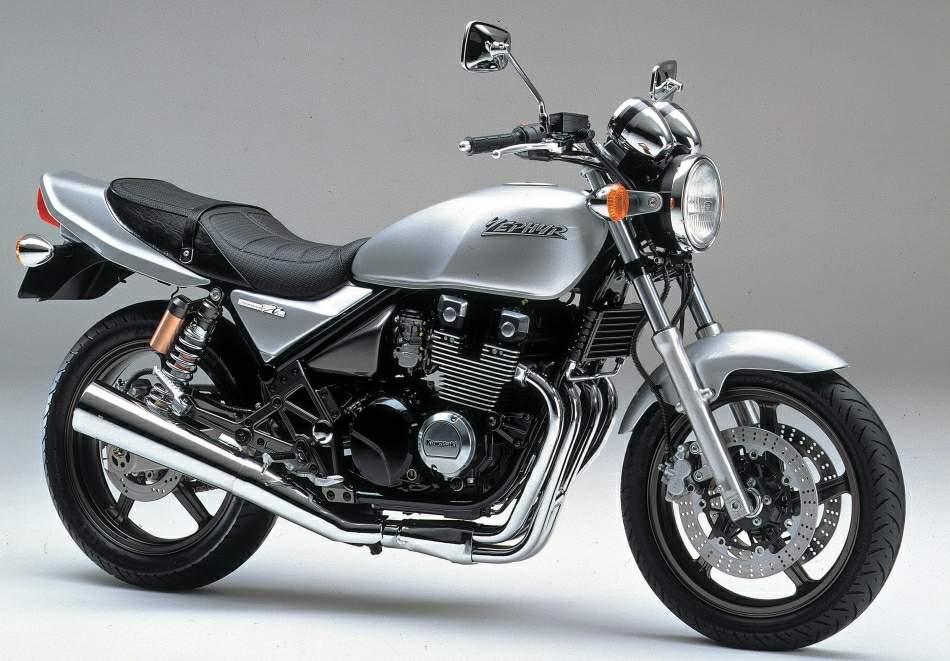
Kawasaki Zephyr [1992-1998]
Another retro that was before its time… or something like that (it’s hard to be sure with the whole ‘old-is-new’ notion of retro bikes). But what we CAN be sure of is that the first UK Zephyrs, the 750 and 550 way back in 1992, were years ahead of Triumph’s first Bonneville and a full 25 years before the Z900 RS which shares so much of its styling.
In fact, the Zephyr was so far ahead of the retro curve it wasn’t even called a retro bike at the time, being referred to as a ‘tribute’ machine instead. It wasn’t rated much, either – but it should have been.
The 750 in particular, using an old, air-cooled, two-valve Z650-derived four in a brilliantly authentic ‘70s chassis but with uprated wheels, brakes, suspension and clocks, was a complete ‘blast from the past’ and, although only 76bhp, temptingly cheap, too.
The following 1100 was bigger and better while Classic versions, with ‘70s paint, badging and wire wheels, looked more authentic still.
Sadly, ‘retro’ wasn’t then what it is today and they were mostly overlooked for faster, more modern bikes such as Yamaha’s XJR1200. Now, however, they’re appreciating classics in their own right…

Yamaha TDM850 [1991-2012]
You can always trust Yamaha to come up with bikes that, occasionally, are completely off the wall. Take its 1980s TDR250 stroker, for example, or the aforementioned GTS1000.
The 1991 TDM850, however, stands out as a bike before its time, especially as its ‘adventure-bike-based roadster twin’ recipe is about to copy, a full 30 years on, by Honda’s reported new Africa Twin-based CRF1000 sports-tourer twin. It’s also more than a little like BMW’s 2019 F900XR or even Yamaha’s own Tracer 7.
Back in 1991 the TDM850 was a bolt from the blue. Based on the parallel twin from the XTZ750 Super Tenere it was an enlarged but road-specific, upright, sports all-rounder and although it was also confusing (so much so that this tester, on its launch, wore motocross boots) it was also, with 77bhp, a Deltabox twin spar frame, decent comfort and great looks, an absolute hoot, to ride.
Of course, it was also so confusing it never really took off, even after being updated to 900cc form, and only today is this type of bike truly appreciated and popular. Maybe if Yamaha had come up with a 1200cc version based on its latest XTZ it might have been a different story…
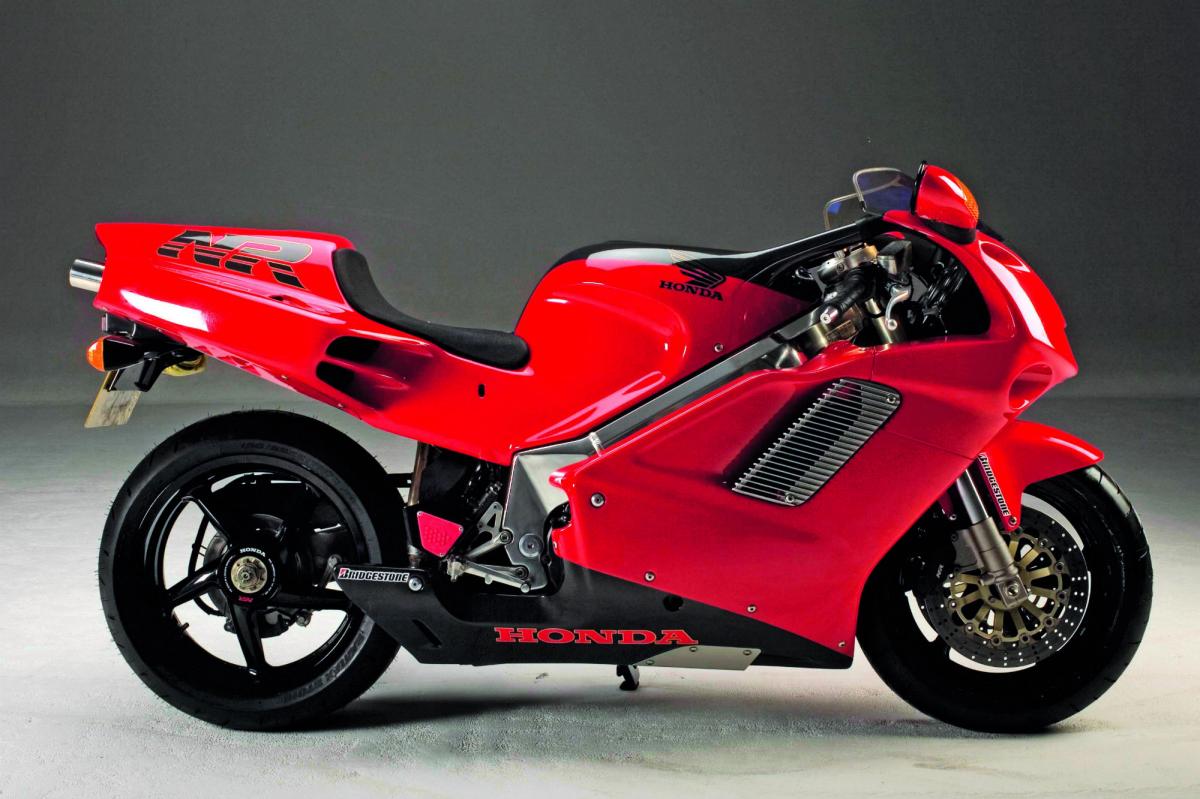
Honda NR750 [1992]
Motorcycles don’t get much more futuristic (or plain mad, depending on your point of view) than Honda’s unique NR750 – and we’re not just talking about its ‘oval’ pistons.
The limited edition, road version of Honda’s ultra-ambition NR500 GP four-stroke (which, in a bid to override a four-stroke’s inherent power discrepancy to a two-stroke of the same capacity and cylinders, effectively turned its V4 layout into one with the advantages of a V8 via the use of oval cylinders) was ahead of its time in many more ways, too.
It was one of the first four-strokes with underseat exhausts; it had pioneering digital clocks and carbon fibre bodywork and it was also among the first bikes with a single-sided swing arm and inverted forks.
Of course, all of that doesn’t come cheap – just 700 were built at a UK price at the time of around £38,000. Nor was it particularly fast (it produced just 125bhp and at 223kg dry was quite heavy), but otherwise the NR had it all, so much so that 916 designer Massimo Tamburini freely admitted much if his inspiration came from the Honda.

Triumph Thunderbird 900 [1995-2004]
Most bikers assume reborn Triumph’s first retro bike was its 2001 Bonneville 800. Not so. Although the cute, accessible, mid-sized twin has proved a huge success, so much so that the bulk of modern Triumph’s current line up is ‘modern classics’ based on the now 900 or 1200cc retro twin, its first proper retro was actually the 1995 Thunderbird 900 – a full six years before the Bonneville.
It was brilliantly well done, too – so much so that much of the Bonneville’s style was developed from it. Launched four years after the first Hinckley bikes and conceived specifically to appeal to the huge and important American market, which reborn Triumph entered for the first time that year, the T-bird was actually an extensively reworked Trident 900.
New engine cases and cylinders gave the engine the aircooled ‘look’, detuning delivered 70bhp but with a meatier midrange allowing the switch from a six to five-speed gearbox; there were quality Akront alloy-rimmed wire wheels; Motad peashooter exhausts.
The ride was plush, effective and characterful and detailing (hand pin-striped paint, neat badging) was sublime. In fact, Triumph themselves decided it was too good and too expensive to make, successively downgrading the spec on subsequent models.
It didn’t really matter. The first T-bird was a Triumph retro ahead of its time, has never been successfully replaced (the new 2011 twin cylinder cruiser version was a flop) and good originals are now more prized than ever.
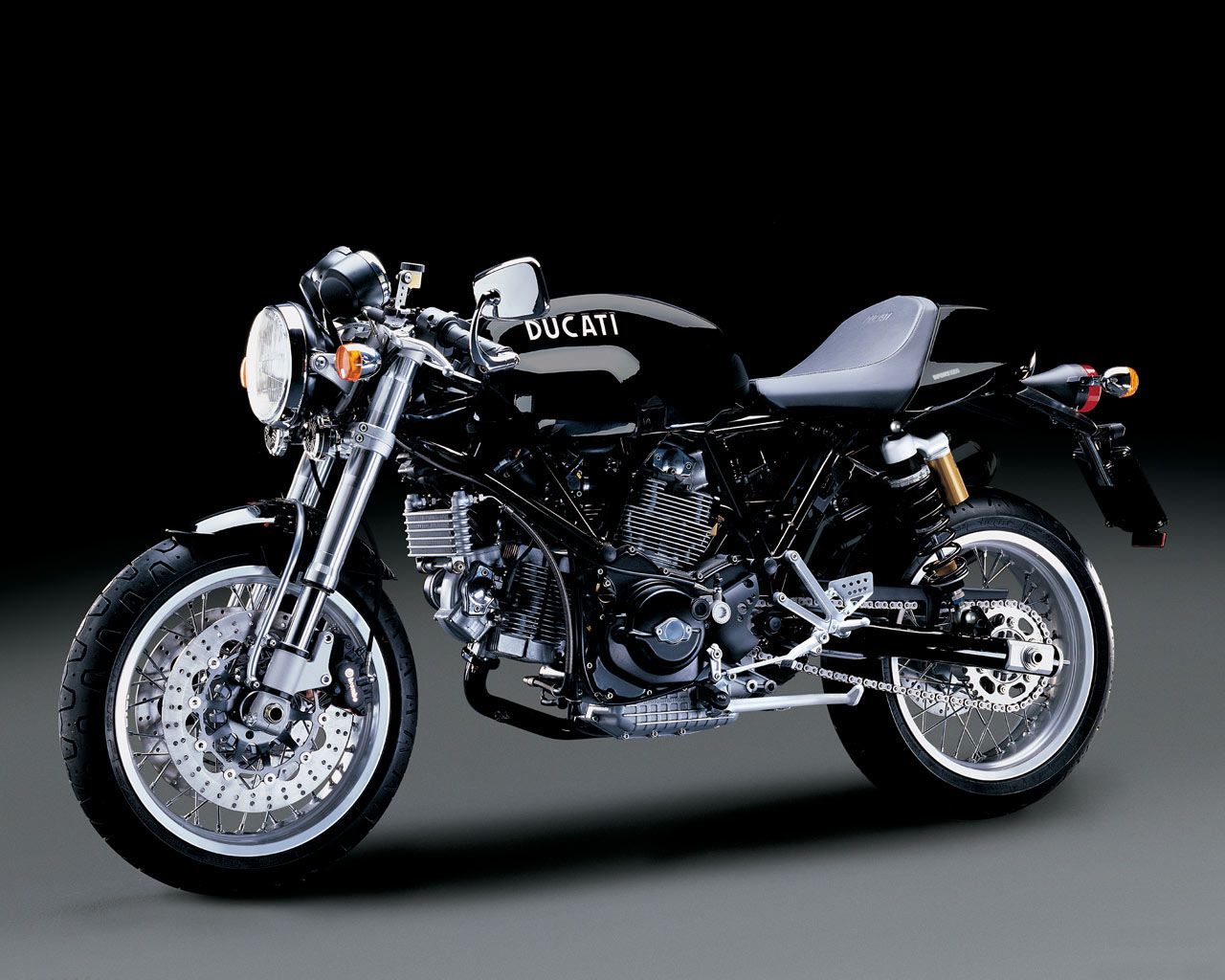
Ducati SportClassics [2006-2009]
No modern motorcycle – and certainly no retro – is as universally agreed to have been ‘a bike before its time’ as much as Ducati’s brilliant SportClassic family. Launched in 2006 – although they could easily have been unveiled earlier still – a combination of bad timing (this was before retro bikes truly took off) and slight design flaws overshadowed their style and charm to the extent that they were a sales flop and the range was dropped – just as retro bikes began to take off.
There’s more than a little irony about the fact that, just six years later Ducati introduced its new Scrambler retro bike family to huge success. However, anyone who’s ridden a SportClassic is in no doubt about which is the better bike.
Simply: the SportClassics had it all. The two initial single seat models, the high spec, faired Paul Smart Limited Edition and more base, unfaired Sport 1000, were derived from Pierre Terblanche’s MH900e concept bike of 2000 and inspired by the early 1970s 750 SuperSport and Sport 750 respectively.
With a standard 90bhp 1000cc V-twin and sporty chassis including inverted forks and Brembo brakes they went well enough. And, with exquisite, ‘derivative’ styling and even better detailing they were mouth-watering to look at, too – far better than most modern retros in fact. Trouble was, the LE was expensive, the Sport had an overly extreme riding position and solo seat and the follow-up, twin-seated GT1000 in 2007 wasn’t as pretty.
This was addressed with the 1000 Sport Biposto in 2008 but it was too late and poor sales led to the whole family being dropped in 2009. With hindsight it was a crying shame and today SportClassics are highly valued with the prices (in excess of £10K, and climbing) to match.
